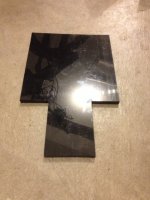The Mighty Volt
1 MW
Hi there. I am going to knock up some boxes for some 16ah 36v batteries, LiFePo4, so you can imagine they would need to be able to absorb and hold quite a bit of weight. I have a TIG/MMA welder which I am going to use {most likely the MMA option} to weld them up. I am going to cut the boxes out of sheet steel with a dremel tool or circular saw.
Any idea what thickness of steel I should use? I don't want to use something too light but I don't want to turn the bike into an armoured car either by adding too much steel. It is already a bit heavy with the frame, suspension, big X5 and batteries.
I MIGHT be tempted to use aluminium to save on weight IF somebody here can tell me how to weld the damned stuff with a stick welder. Thanks.
All and any suggestions would be welcomed. Thanks.
Any idea what thickness of steel I should use? I don't want to use something too light but I don't want to turn the bike into an armoured car either by adding too much steel. It is already a bit heavy with the frame, suspension, big X5 and batteries.
I MIGHT be tempted to use aluminium to save on weight IF somebody here can tell me how to weld the damned stuff with a stick welder. Thanks.
All and any suggestions would be welcomed. Thanks.



